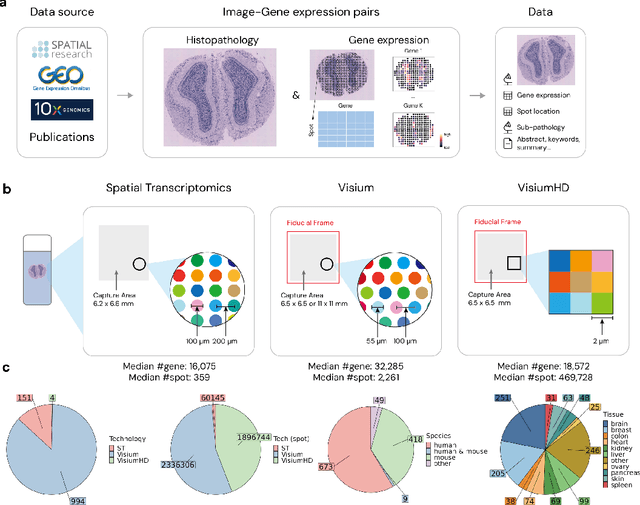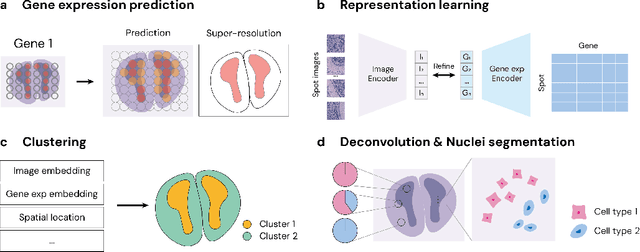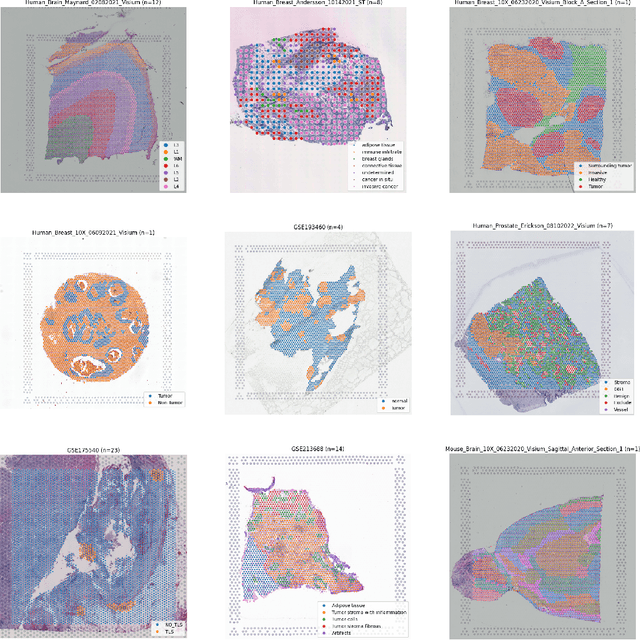Jiawen Chen
Critical Nodes Identification in Complex Networks: A Survey
Jul 08, 2025Abstract:Complex networks have become essential tools for understanding diverse phenomena in social systems, traffic systems, biomolecular systems, and financial systems. Identifying critical nodes is a central theme in contemporary research, serving as a vital bridge between theoretical foundations and practical applications. Nevertheless, the intrinsic complexity and structural heterogeneity characterizing real-world networks, with particular emphasis on dynamic and higher-order networks, present substantial obstacles to the development of universal frameworks for critical node identification. This paper provides a comprehensive review of critical node identification techniques, categorizing them into seven main classes: centrality, critical nodes deletion problem, influence maximization, network control, artificial intelligence, higher-order and dynamic methods. Our review bridges the gaps in existing surveys by systematically classifying methods based on their methodological foundations and practical implications, and by highlighting their strengths, limitations, and applicability across different network types. Our work enhances the understanding of critical node research by identifying key challenges, such as algorithmic universality, real-time evaluation in dynamic networks, analysis of higher-order structures, and computational efficiency in large-scale networks. The structured synthesis consolidates current progress and highlights open questions, particularly in modeling temporal dynamics, advancing efficient algorithms, integrating machine learning approaches, and developing scalable and interpretable metrics for complex systems.
Decoupling Spatio-Temporal Prediction: When Lightweight Large Models Meet Adaptive Hypergraphs
May 26, 2025Abstract:Spatio-temporal prediction is a pivotal task with broad applications in traffic management, climate monitoring, energy scheduling, etc. However, existing methodologies often struggle to balance model expressiveness and computational efficiency, especially when scaling to large real-world datasets. To tackle these challenges, we propose STH-SepNet (Spatio-Temporal Hypergraph Separation Networks), a novel framework that decouples temporal and spatial modeling to enhance both efficiency and precision. Therein, the temporal dimension is modeled using lightweight large language models, which effectively capture low-rank temporal dynamics. Concurrently, the spatial dimension is addressed through an adaptive hypergraph neural network, which dynamically constructs hyperedges to model intricate, higher-order interactions. A carefully designed gating mechanism is integrated to seamlessly fuse temporal and spatial representations. By leveraging the fundamental principles of low-rank temporal dynamics and spatial interactions, STH-SepNet offers a pragmatic and scalable solution for spatio-temporal prediction in real-world applications. Extensive experiments on large-scale real-world datasets across multiple benchmarks demonstrate the effectiveness of STH-SepNet in boosting predictive performance while maintaining computational efficiency. This work may provide a promising lightweight framework for spatio-temporal prediction, aiming to reduce computational demands and while enhancing predictive performance. Our code is avaliable at https://github.com/SEU-WENJIA/ST-SepNet-Lightweight-LLMs-Meet-Adaptive-Hypergraphs.
CellTypeAgent: Trustworthy cell type annotation with Large Language Models
May 13, 2025Abstract:Cell type annotation is a critical yet laborious step in single-cell RNA sequencing analysis. We present a trustworthy large language model (LLM)-agent, CellTypeAgent, which integrates LLMs with verification from relevant databases. CellTypeAgent achieves higher accuracy than existing methods while mitigating hallucinations. We evaluated CellTypeAgent across nine real datasets involving 303 cell types from 36 tissues. This combined approach holds promise for more efficient and reliable cell type annotation.
Classic Video Denoising in a Machine Learning World: Robust, Fast, and Controllable
Apr 04, 2025Abstract:Denoising is a crucial step in many video processing pipelines such as in interactive editing, where high quality, speed, and user control are essential. While recent approaches achieve significant improvements in denoising quality by leveraging deep learning, they are prone to unexpected failures due to discrepancies between training data distributions and the wide variety of noise patterns found in real-world videos. These methods also tend to be slow and lack user control. In contrast, traditional denoising methods perform reliably on in-the-wild videos and run relatively quickly on modern hardware. However, they require manually tuning parameters for each input video, which is not only tedious but also requires skill. We bridge the gap between these two paradigms by proposing a differentiable denoising pipeline based on traditional methods. A neural network is then trained to predict the optimal denoising parameters for each specific input, resulting in a robust and efficient approach that also supports user control.
STimage-1K4M: A histopathology image-gene expression dataset for spatial transcriptomics
Jun 10, 2024



Abstract:Recent advances in multi-modal algorithms have driven and been driven by the increasing availability of large image-text datasets, leading to significant strides in various fields, including computational pathology. However, in most existing medical image-text datasets, the text typically provides high-level summaries that may not sufficiently describe sub-tile regions within a large pathology image. For example, an image might cover an extensive tissue area containing cancerous and healthy regions, but the accompanying text might only specify that this image is a cancer slide, lacking the nuanced details needed for in-depth analysis. In this study, we introduce STimage-1K4M, a novel dataset designed to bridge this gap by providing genomic features for sub-tile images. STimage-1K4M contains 1,149 images derived from spatial transcriptomics data, which captures gene expression information at the level of individual spatial spots within a pathology image. Specifically, each image in the dataset is broken down into smaller sub-image tiles, with each tile paired with 15,000-30,000 dimensional gene expressions. With 4,293,195 pairs of sub-tile images and gene expressions, STimage-1K4M offers unprecedented granularity, paving the way for a wide range of advanced research in multi-modal data analysis an innovative applications in computational pathology, and beyond.
Benchmarking Generation and Evaluation Capabilities of Large Language Models for Instruction Controllable Summarization
Nov 15, 2023Abstract:While large language models (LLMs) already achieve strong performance on standard generic summarization benchmarks, their performance on more complex summarization task settings is less studied. Therefore, we benchmark LLMs on instruction controllable text summarization, where the model input consists of both a source article and a natural language requirement for the desired summary characteristics. To this end, we curate an evaluation-only dataset for this task setting and conduct human evaluation on 5 LLM-based summarization systems. We then benchmark LLM-based automatic evaluation for this task with 4 different evaluation protocols and 11 LLMs, resulting in 40 evaluation methods in total. Our study reveals that instruction controllable text summarization remains a challenging task for LLMs, since (1) all LLMs evaluated still make factual and other types of errors in their summaries; (2) all LLM-based evaluation methods cannot achieve a strong alignment with human annotators when judging the quality of candidate summaries; (3) different LLMs show large performance gaps in summary generation and evaluation. We make our collected benchmark, InstruSum, publicly available to facilitate future research in this direction.
On the Identifiability and Interpretability of Gaussian Process Models
Oct 25, 2023



Abstract:In this paper, we critically examine the prevalent practice of using additive mixtures of Mat\'ern kernels in single-output Gaussian process (GP) models and explore the properties of multiplicative mixtures of Mat\'ern kernels for multi-output GP models. For the single-output case, we derive a series of theoretical results showing that the smoothness of a mixture of Mat\'ern kernels is determined by the least smooth component and that a GP with such a kernel is effectively equivalent to the least smooth kernel component. Furthermore, we demonstrate that none of the mixing weights or parameters within individual kernel components are identifiable. We then turn our attention to multi-output GP models and analyze the identifiability of the covariance matrix $A$ in the multiplicative kernel $K(x,y) = AK_0(x,y)$, where $K_0$ is a standard single output kernel such as Mat\'ern. We show that $A$ is identifiable up to a multiplicative constant, suggesting that multiplicative mixtures are well suited for multi-output tasks. Our findings are supported by extensive simulations and real applications for both single- and multi-output settings. This work provides insight into kernel selection and interpretation for GP models, emphasizing the importance of choosing appropriate kernel structures for different tasks.
Learning Lens Blur Fields
Oct 17, 2023Abstract:Optical blur is an inherent property of any lens system and is challenging to model in modern cameras because of their complex optical elements. To tackle this challenge, we introduce a high-dimensional neural representation of blur$-$$\textit{the lens blur field}$$-$and a practical method for acquiring it. The lens blur field is a multilayer perceptron (MLP) designed to (1) accurately capture variations of the lens 2D point spread function over image plane location, focus setting and, optionally, depth and (2) represent these variations parametrically as a single, sensor-specific function. The representation models the combined effects of defocus, diffraction, aberration, and accounts for sensor features such as pixel color filters and pixel-specific micro-lenses. To learn the real-world blur field of a given device, we formulate a generalized non-blind deconvolution problem that directly optimizes the MLP weights using a small set of focal stacks as the only input. We also provide a first-of-its-kind dataset of 5D blur fields$-$for smartphone cameras, camera bodies equipped with a variety of lenses, etc. Lastly, we show that acquired 5D blur fields are expressive and accurate enough to reveal, for the first time, differences in optical behavior of smartphone devices of the same make and model.
Advancements in 3D Lane Detection Using LiDAR Point Clouds: From Data Collection to Model Development
Sep 24, 2023



Abstract:Advanced Driver-Assistance Systems (ADAS) have successfully integrated learning-based techniques into vehicle perception and decision-making. However, their application in 3D lane detection for effective driving environment perception is hindered by the lack of comprehensive LiDAR datasets. The sparse nature of LiDAR point cloud data prevents an efficient manual annotation process. To solve this problem, we present LiSV-3DLane, a large-scale 3D lane dataset that comprises 20k frames of surround-view LiDAR point clouds with enriched semantic annotation. Unlike existing datasets confined to a frontal perspective, LiSV-3DLane provides a full 360-degree spatial panorama around the ego vehicle, capturing complex lane patterns in both urban and highway environments. We leverage the geometric traits of lane lines and the intrinsic spatial attributes of LiDAR data to design a simple yet effective automatic annotation pipeline for generating finer lane labels. To propel future research, we propose a novel LiDAR-based 3D lane detection model, LiLaDet, incorporating the spatial geometry learning of the LiDAR point cloud into Bird's Eye View (BEV) based lane identification. Experimental results indicate that LiLaDet outperforms existing camera- and LiDAR-based approaches in the 3D lane detection task on the K-Lane dataset and our LiSV-3DLane.
MatSpectNet: Material Segmentation Network with Domain-Aware and Physically-Constrained Hyperspectral Reconstruction
Aug 06, 2023Abstract:Achieving accurate material segmentation for 3-channel RGB images is challenging due to the considerable variation in a material's appearance. Hyperspectral images, which are sets of spectral measurements sampled at multiple wavelengths, theoretically offer distinct information for material identification, as variations in intensity of electromagnetic radiation reflected by a surface depend on the material composition of a scene. However, existing hyperspectral datasets are impoverished regarding the number of images and material categories for the dense material segmentation task, and collecting and annotating hyperspectral images with a spectral camera is prohibitively expensive. To address this, we propose a new model, the MatSpectNet to segment materials with recovered hyperspectral images from RGB images. The network leverages the principles of colour perception in modern cameras to constrain the reconstructed hyperspectral images and employs the domain adaptation method to generalise the hyperspectral reconstruction capability from a spectral recovery dataset to material segmentation datasets. The reconstructed hyperspectral images are further filtered using learned response curves and enhanced with human perception. The performance of MatSpectNet is evaluated on the LMD dataset as well as the OpenSurfaces dataset. Our experiments demonstrate that MatSpectNet attains a 1.60% increase in average pixel accuracy and a 3.42% improvement in mean class accuracy compared with the most recent publication. The project code is attached to the supplementary material and will be published on GitHub.
 Add to Chrome
Add to Chrome Add to Firefox
Add to Firefox Add to Edge
Add to Edge